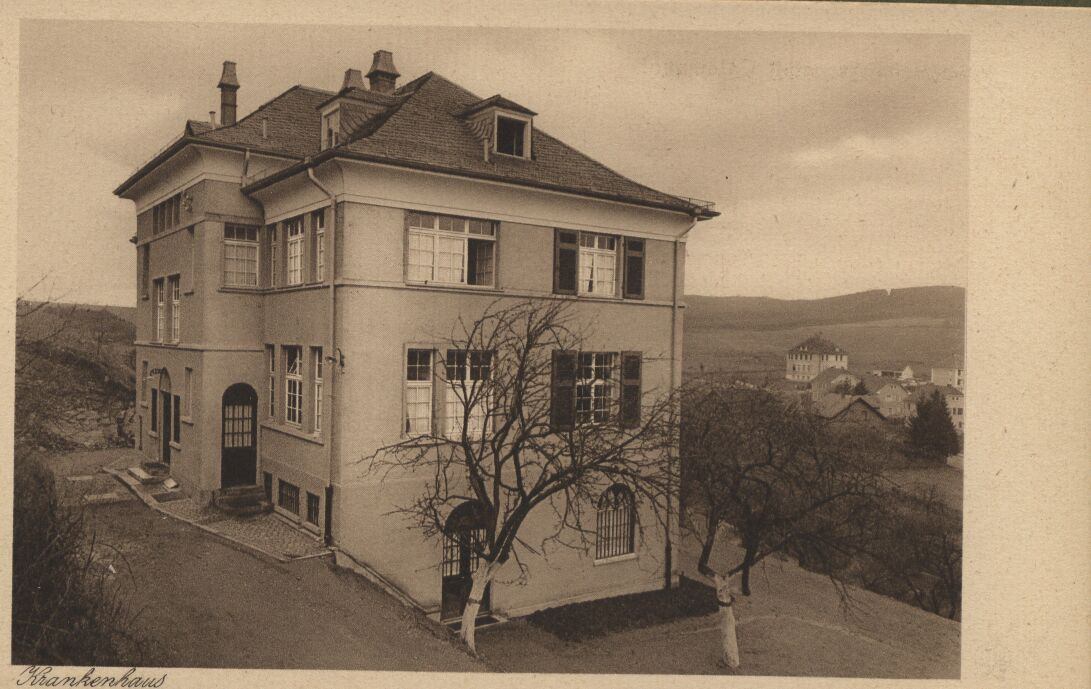
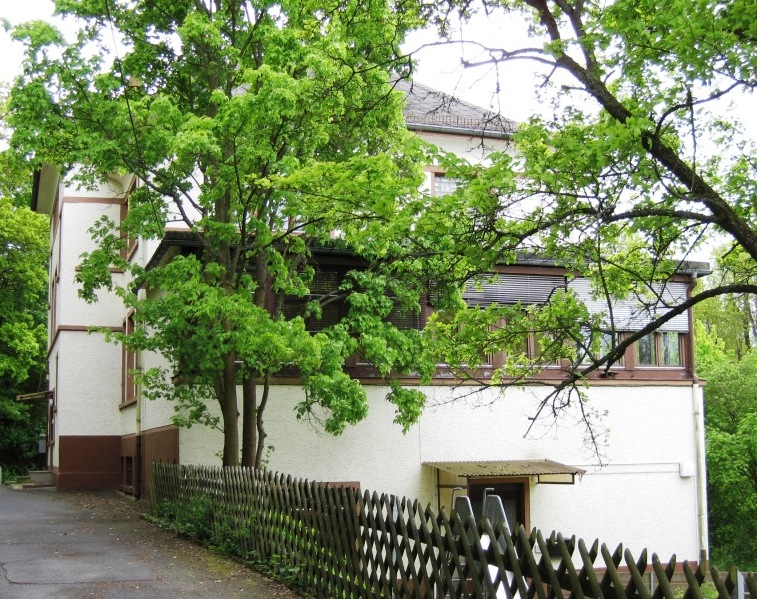
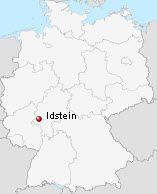
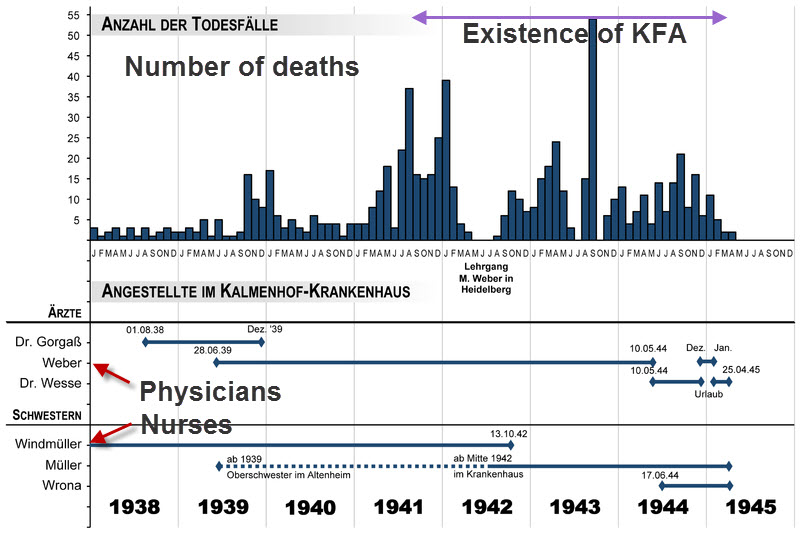 Source:
http://de.wikipedia.org/w/index.php?title=Datei:Kalmenhof_Diagramm_Todesf%E4lle.png;
edited by author.
Source:
http://de.wikipedia.org/w/index.php?title=Datei:Kalmenhof_Diagramm_Todesf%E4lle.png;
edited by author. |
 |
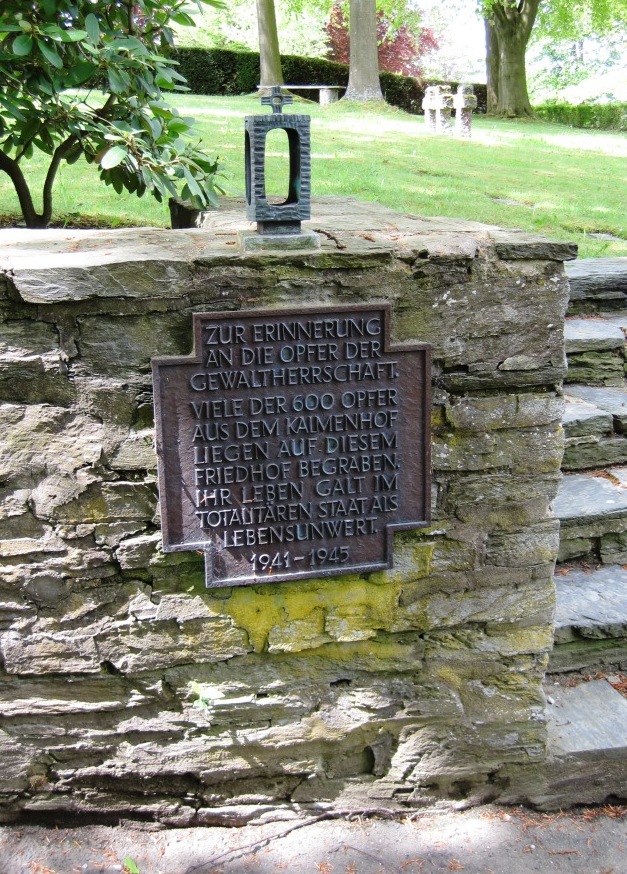 Source: Author.
Source: Author.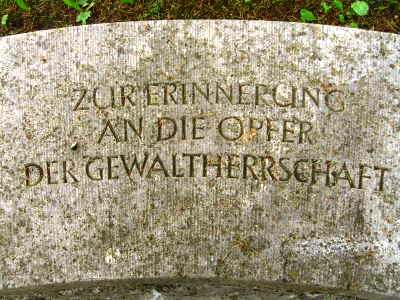 |
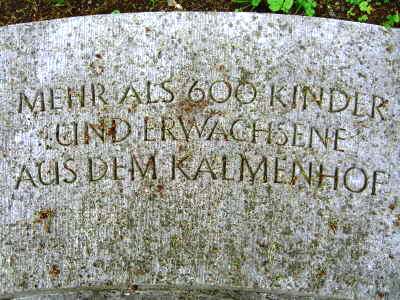 |
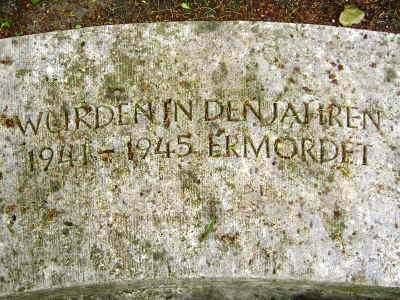 |
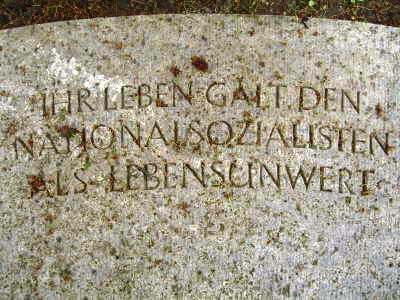 |
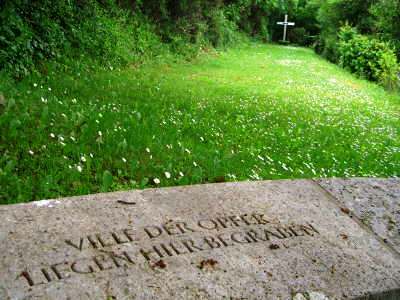 |
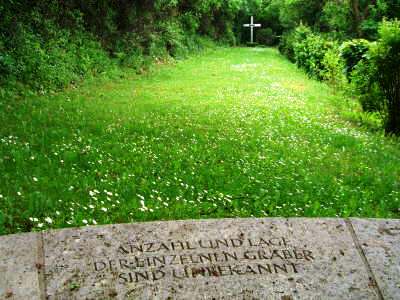 |
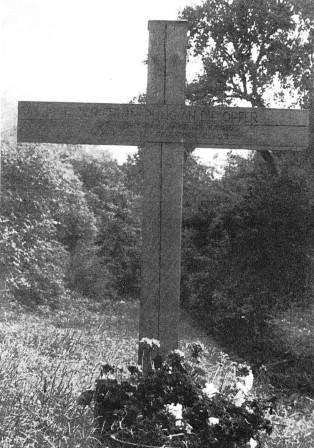 |
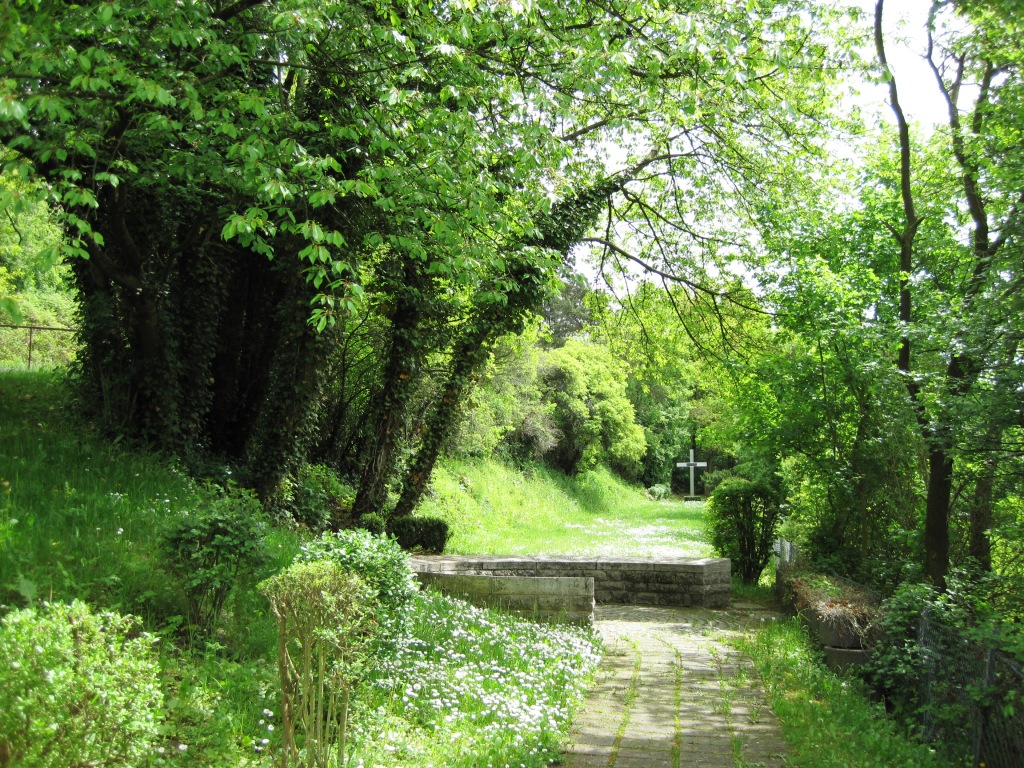 |
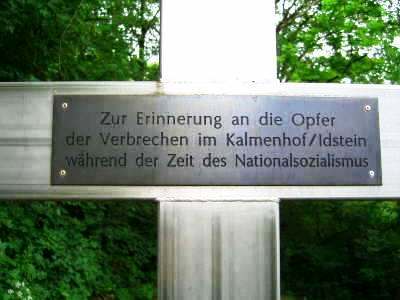 |
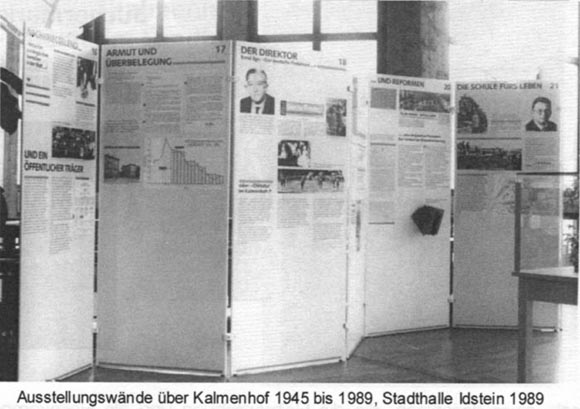 Source: http://www.heimkinder-ueberlebende.org/Martin_04_10_06-11.jpg
Source: http://www.heimkinder-ueberlebende.org/Martin_04_10_06-11.jpg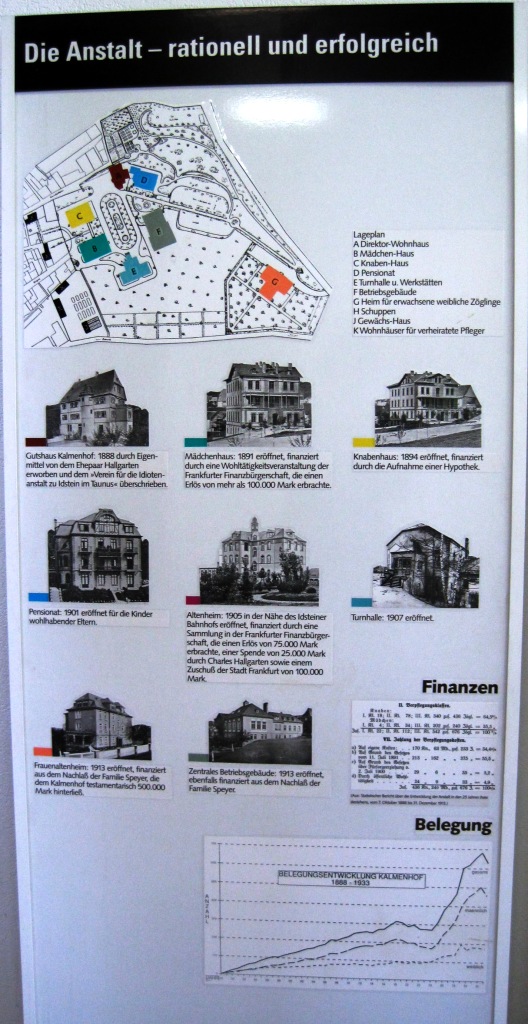 |
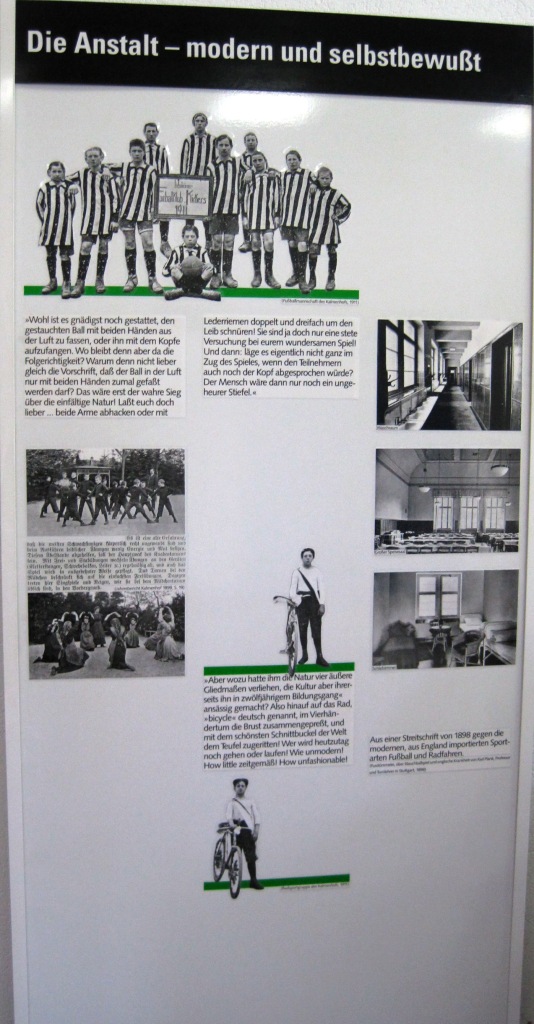 |
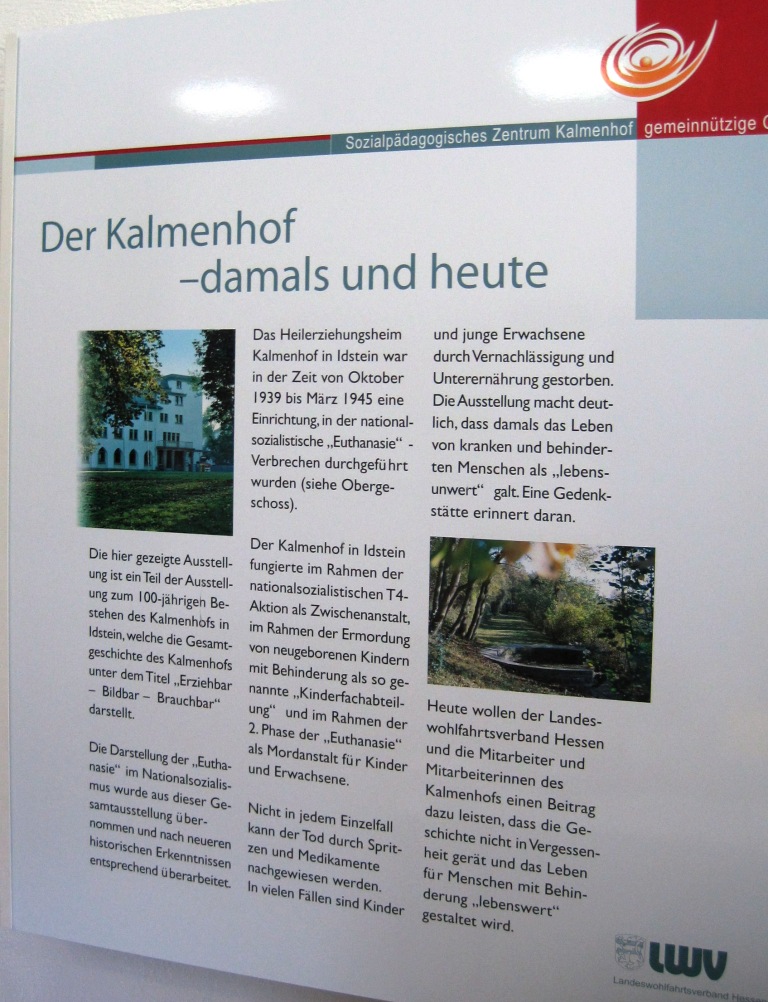 |
| Lower level left side: "The facility:
Efficient and successful" A map and different parts of the historical facilities are shown. |
Lower level left side: "The facility:
Modern and confident" The facility embraces a novel pedagogical perspective on people with disabilities: they participate in sports and are begun to be integrated into society. |
Lower level right side: "The
Kalmenhof: Then and now" A brief overview of the exhibit, its origin, the "euthanasia" crimes (both in the special children's ward and during decentralized euthanasia) in overview, and the memorial today |
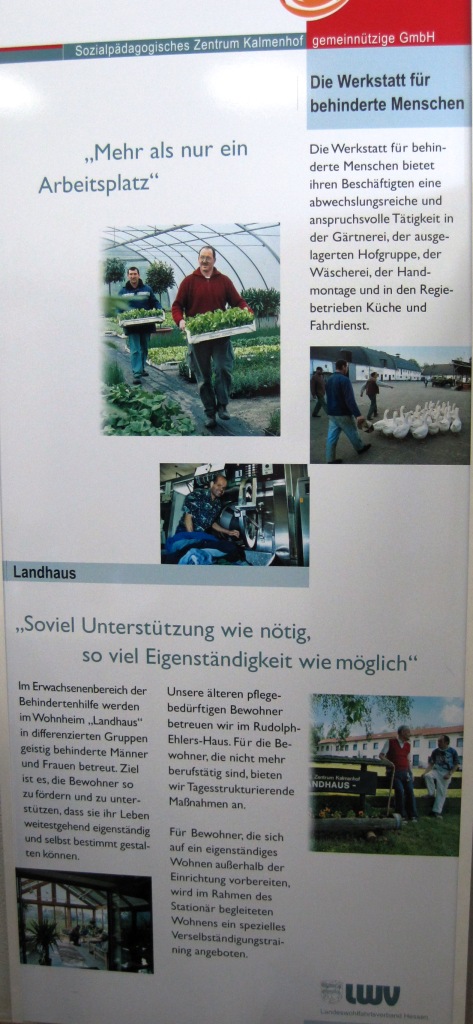 |
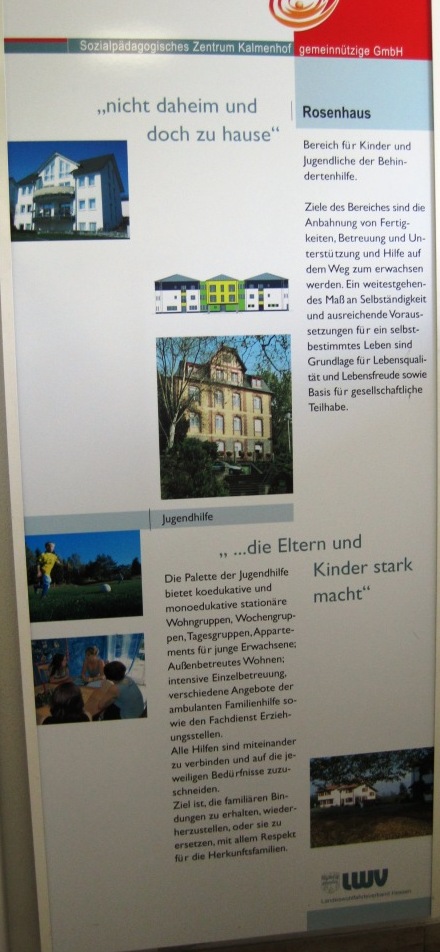 |
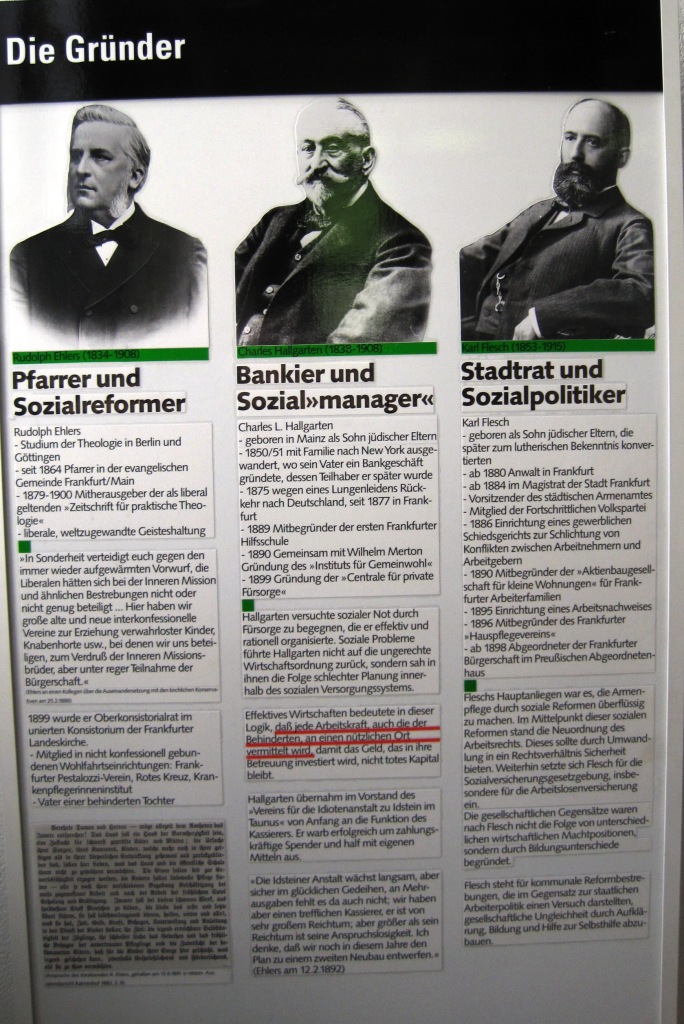 |
| Lower level right side: Various facilities and aspects of assistance to people with disabilities today. | Lower level right side: Various facilities and aspects of assistance to people with disabilities today. | Stair case: "The founders" Biographies of three founders (a reverend, a banker, and a politician), two of them Jewish, of the facility conceived as a progressive charitable foundation, which housed a considerable portion of Jewish individuals until the 1930s. |
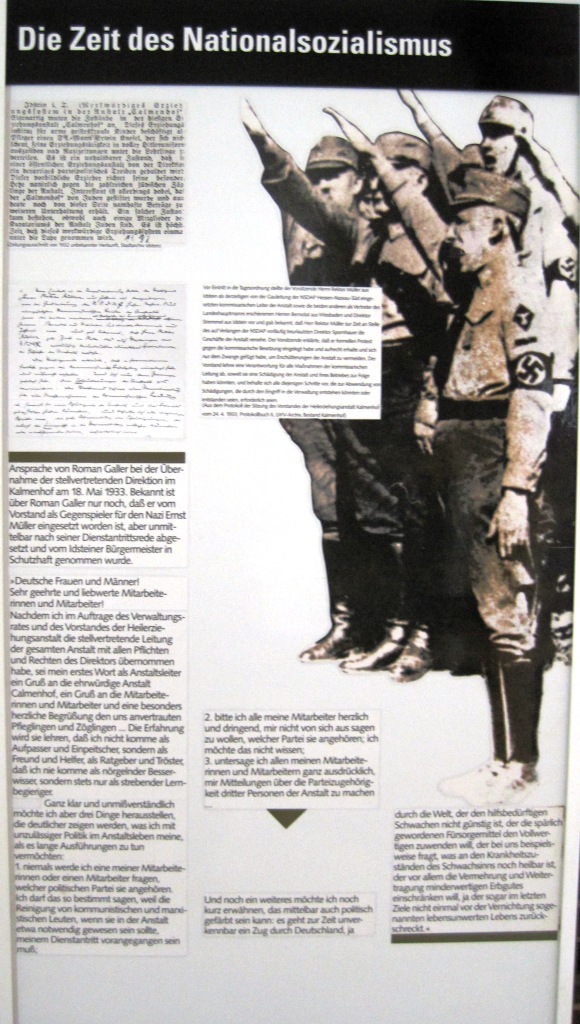 |
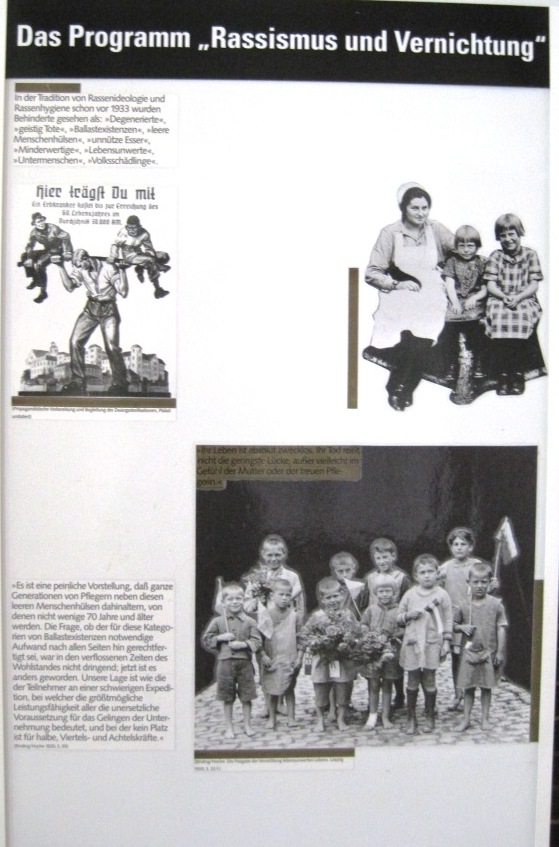 |
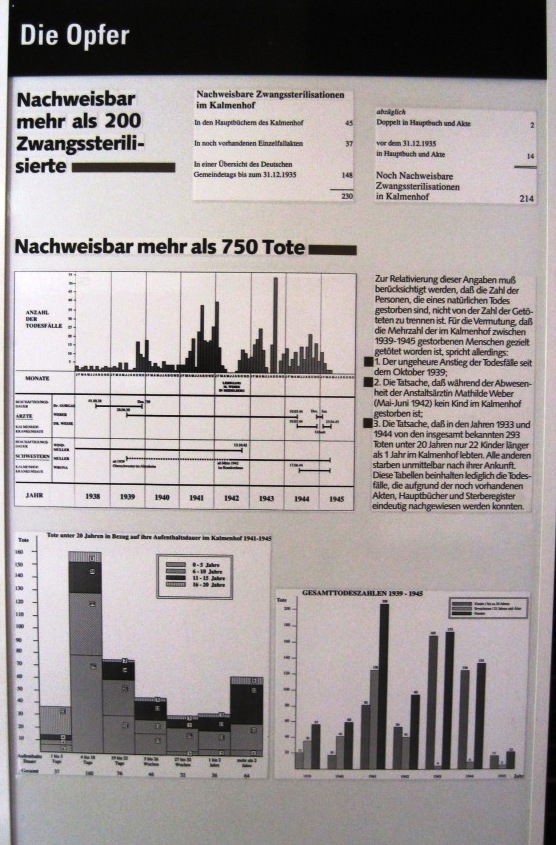 |
| Upper level: "The time of National
Socialism" A speech of the deputy director in 1933, Roman Galler, who opposed the takeover of the facility by the National Socialists and their stance toward people with disabilities, is displayed, as well as a newspaper report (noting both Jewish influence on the institution and the activities of an nurse who worked in his SA uniform) and a protocol of a meeting with the new director. |
Upper level: "The program: 'Racism
and annihilation'" Terms of Social Darwinist provenance such as "useless eaters" and "persons unworthy of living" are shown next to a display depicting people with disabilities as ape-like burden to society and a text from Binding/Hoche's book arguing for the termination of "life not worth living." Next to it is a picture of a Kalmenhof nurse and two children, intended as a contrast and meant to question such assertions and language. |
Upper level: "The victims" Over 200 people were compulsorily sterilized and over 750 people died between 1939 and 1945, among them about 450 who were up to 20 years of age between 1941 and 1945. Half of those died within a month after admission. |
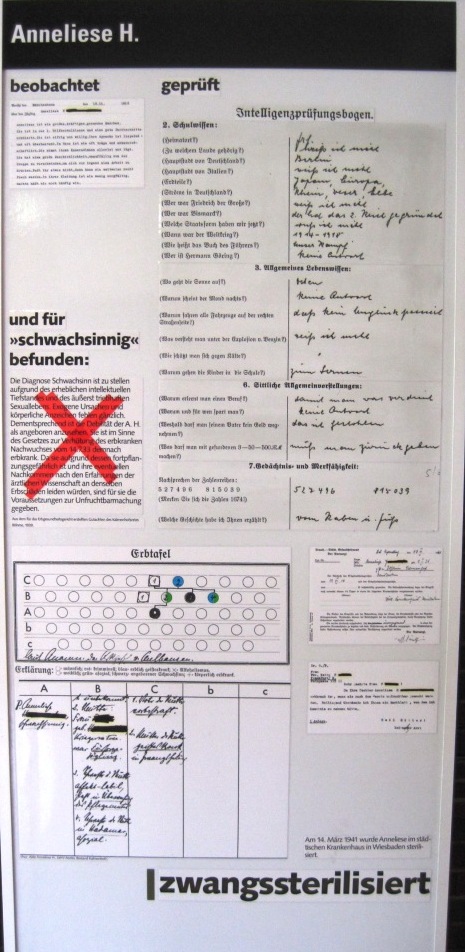 |
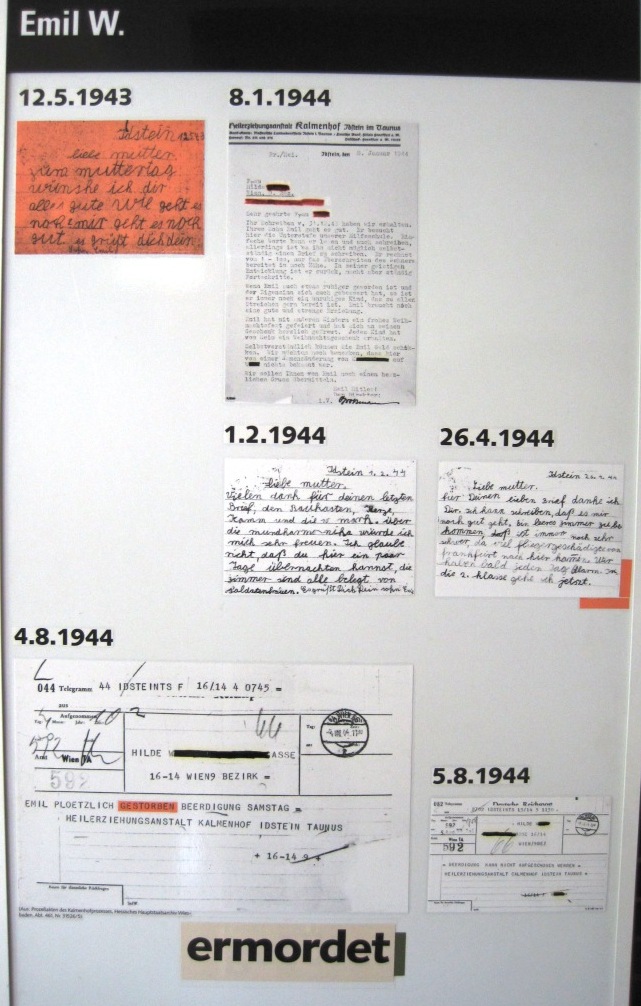 |
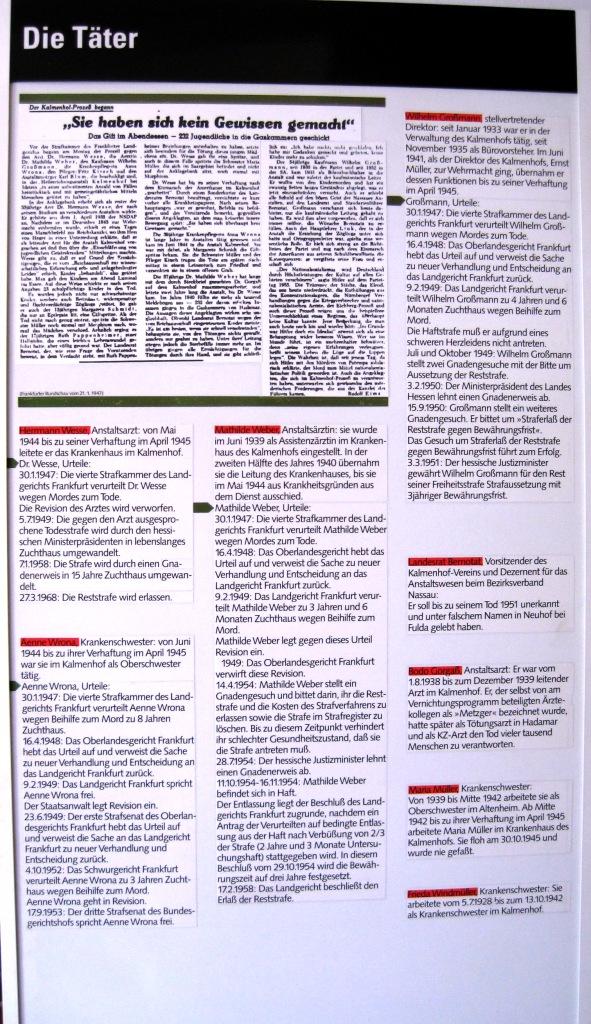 |
| Upper level: "Anneliese H." The case of a victim of sterilization is addressed and the ways in which the victim was observed, tested, found to be intellectually deficient, and sterilized are shown. |
Upper level: "Emil W." The last phase of the life of the child is shown by reference to personal documents: his notes to his mother, the facility's letter stating that the child is well, the notifications about his "sudden death" and the burial that "allowed for no delay." |
Upper level: "The perpetrators" Displayed are the biographies of the perpetrators, and the outcomes of their trials, as well as a newspaper report. |
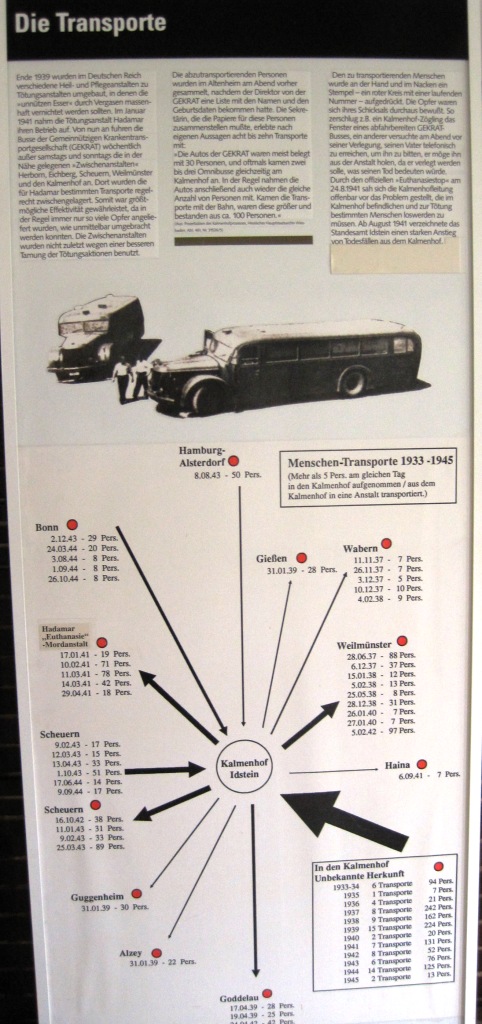 |
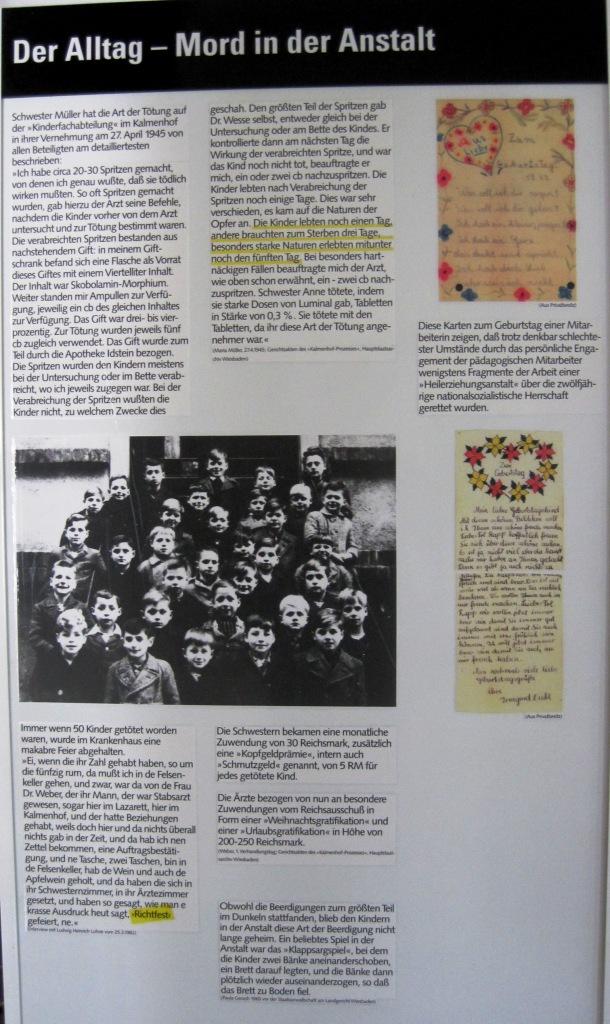 |
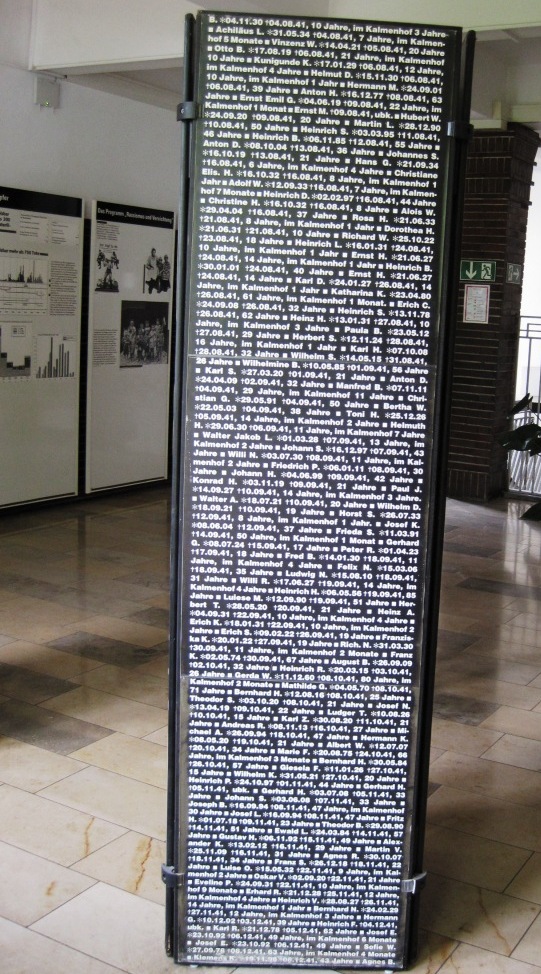 |
| Upper level: "The transports" The function of the facility as intermediate station for patients destined for the gas murder facility Hadamar is discussed. Transports also occurred to other facilities. |
Upper level: "Everyday life: Murder
in the facility" Various testimony from trial records and personal memory are given, including the nature of the killings of children and a ritual of "celebration" by personnel. Also shown are personal letters showing that remnants of the humanistic spirit at Kalmenhof continued among some. |
Upper level: Stela with anonymized
names of victims Several such stelae are displayed. |
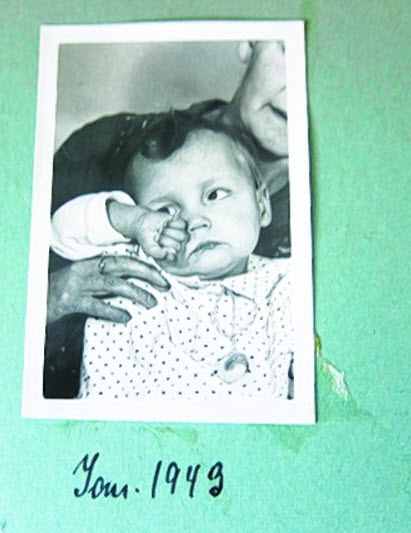 Peter Harms; Source: Elbe Wochenzeitung;
http://www.elbe-wochenblatt.de/harburg/lokales/acht-neue-stolpersteine-d30877.html
Peter Harms; Source: Elbe Wochenzeitung;
http://www.elbe-wochenblatt.de/harburg/lokales/acht-neue-stolpersteine-d30877.html———. 2005. "Der 'Reichsausschuß zur wissenschaftlichen Erfassung erb- und anlagebedingter schwerer Leiden': Die Ermordung minderjähriger Kranker im Nationalsozialismus 1939-1945." Master's Thesis in History, University of Berlin.